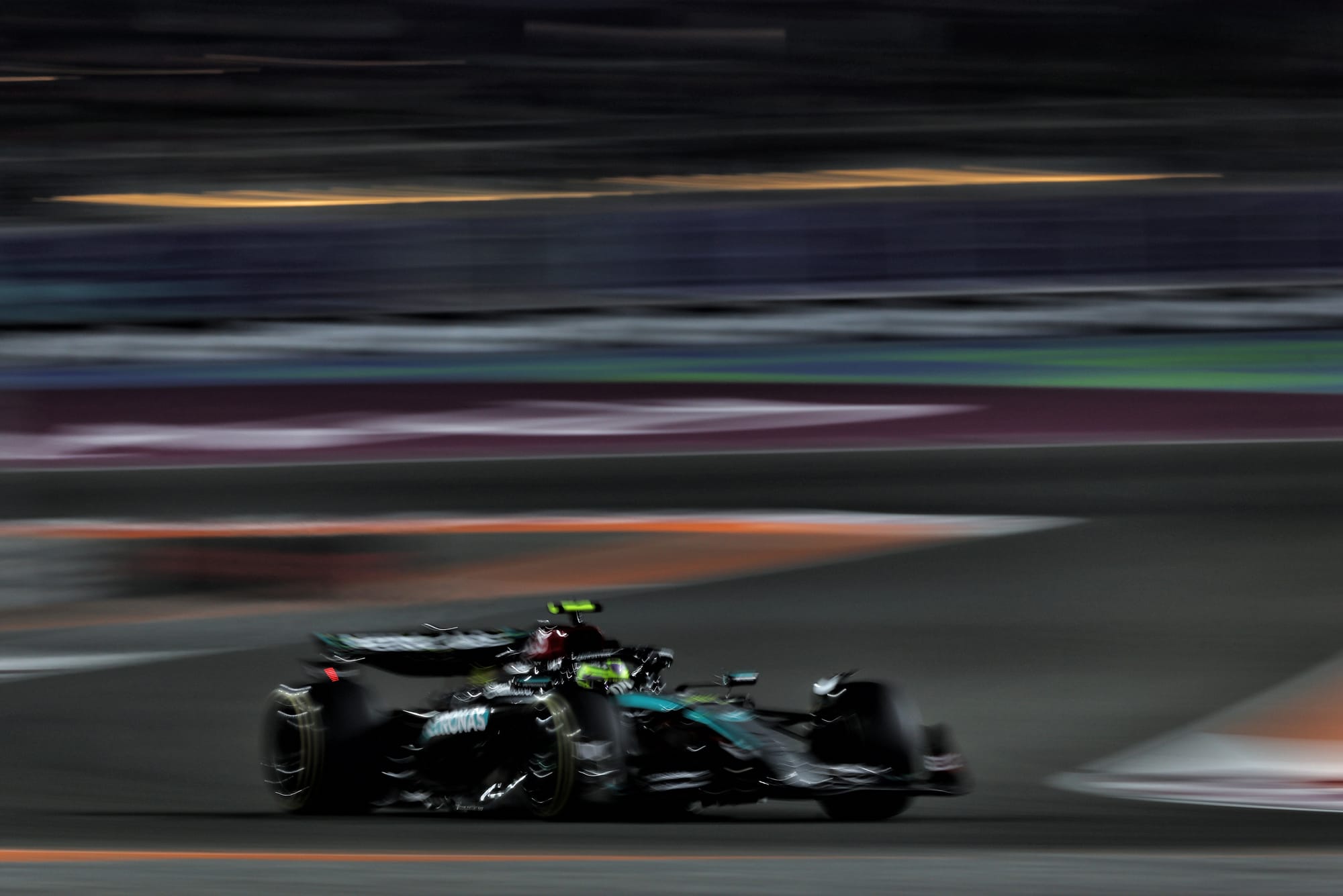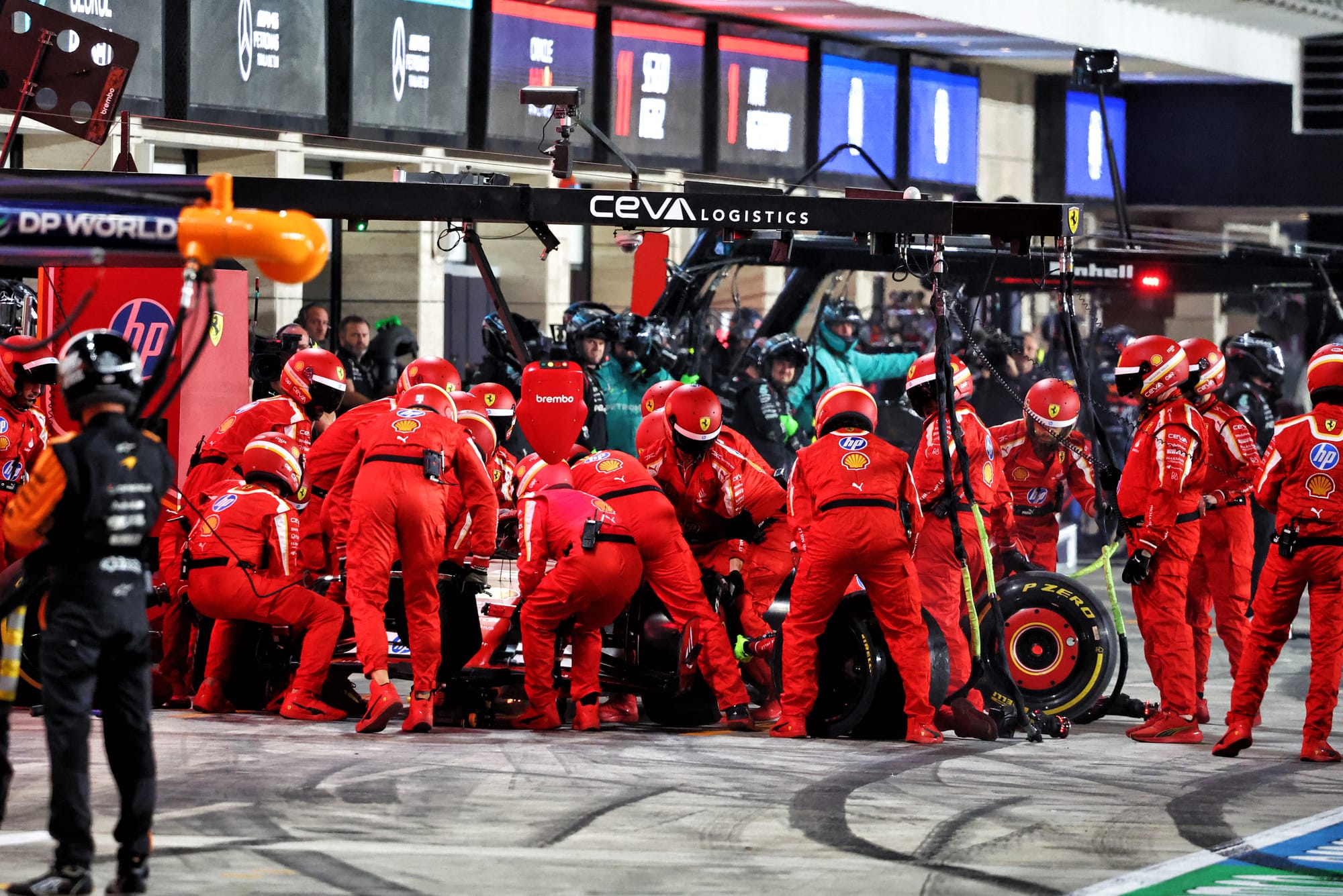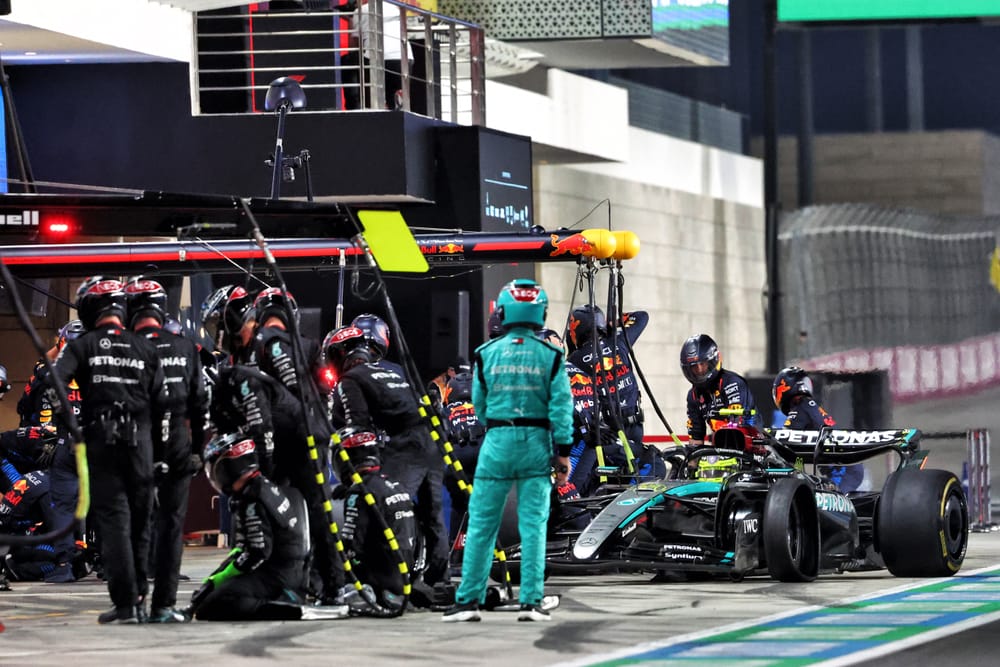Pirelli has finally revealed the findings of its investigation into the tyre failures that hit Lewis Hamilton and Carlos Sainz at last year's Formula 1 Qatar Grand Prix.
During last December’s event at the Losail circuit, the hopes of Hamilton and Sainz were dashed after they both suffered front left tyre failures within seconds of each other in the race.
Initial suspicions had centred on their punctures being the result of them picking up debris after Valtteri Bottas ran over Alex Albon’s discarded mirror that had been left on the start-finish straight.
However, this scenario was ruled out several days later after telemetry data showed that the tyres on both drivers were already failing before they came upon the debris field from the mirror.
Mercedes trackside engineering director Andrew Shovlin said at the time: “Surprisingly, we can see Lewis start to lose pressure prior to the mirror being hit by Valtteri. We would therefore say it is unlikely that it was a debris puncture.
“It does not mean that he did not pick up some debris elsewhere, but we need to wait for Pirelli to do their analysis and their investigations.”

The final answer about what caused the Hamilton/Sainz incidents required more detailed analysis work back at Pirelli’s Milan base over the winter – which included looking at the specific tyres that failed as well as those from other cars.
The results of those findings were presented to teams on Monday at a tyre working group meeting that involved Pirelli and the FIA.
The Race can reveal that the conclusions from Pirelli were that the tyre failures were not a repeat of what happened at the 2023 race – when a number of punctures were triggered by cuts from sharp kerb edges.
Instead, Pirelli explained that Sainz and Hamilton’s tyres failed simply because of excessive wear, as they had gone beyond the expected lifespan of their rubber.
Qatar’s unique high grip and smooth track surface means that tyres do not suffer from excessive thermal degradation – and instead wear is a bigger problem.
And that latter factor is exaggerated because the high-speed configuration puts a very high load through the front left tyre.
Teams therefore have to work out how far they can push things before their tyres hit the critical 100% wear limit – where a failure becomes likely.
Even in the Qatar sprint last year, where fuel loads are typically around a third of the amount used in a full race, some teams found themselves hitting the 100% wear rate after just 19 laps.
The problems for Hamilton and Sainz came on lap 35 of the 57-lap grand prix – as drivers tried to extend their opening stint in case the FIA called a safety car or VSC because of the stranded Albon mirror.
Avoiding a repeat

The conclusions of the investigation do at least point to the fact that the changes Pirelli and the FIA implemented last year with kerb changes to avoid a repeat of the 2023 drama appeared to work.
However, the fact that failures occurred because teams took their tyres too far will prompt some discussion now between the FIA and Pirelli about whether any extra action needs to be taken for this year to prevent similar issues.
While implementing a maximum stint length, as happened in 2023, is unlikely, one option could be to shift the tyre selection for the race weekend one step softer.
This would ensure that the tyres lose performance more through thermal degradation well before they hit their maximum wear rate.



